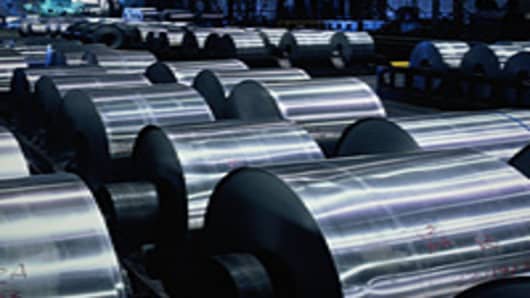Ivan Glasenberg has broken a decade-long silence ahead of the launch of Glencore’s initial public offering this week, saying that the flotation will give the world’s top commodities trader the financial firepower it needs as consolidation gathers pace.
Mr Glasenberg told the Financial Times that the launch of the offering – the largest ever in London – was “imminent” after it received robust support from big institutional investors. Glencore plans to sell a 20 per cent stake worth about $10 billion-$12 billion, valuing the whole company at around $60 billion, bankers said.
Bankers close to the deal said the intention-to-float document will be filed on Thursday, although Mr Glasenberg declined to specify the day.
“The interest from the cornerstones was a lot stronger than we envisaged,” Mr Glasenberg said. “Markets are in our favour too. We have a strong commodities market.”
The company’s chief executive mapped out a strategy of “opportunistic” acquisitions at a much larger scale than in the past and said it would make sense to combine with Xstrata , the London-based miner in which the trader owns a 34 percent stake.
“We believe there is good value in the two companies being together,” he said, but insisted that a deal was not on the table.
“Why has that not happened? It is a value debate. Xstrata .?.?. seems more comfortable for Glencore to go public and get a market price before they may or may not enter into discussions,” he said.
Mr Glasenberg explained that having the flow of Xstrata’s commodities production within the Glencore trading system was “advantageous” to both companies.
“There are a lot of benefits and synergies to put the two companies together,” he said.
The flotation will move Glencore, run from a nondescript Swiss building, further from its origins under Marc Rich, the oil trader who was indicted for tax evasion in the US and pardoned by President Bill Clinton on his last day in the White House.
While insisting that Glencore would be disciplined and opportunistic, Mr Glasenberg said it could use its shares as currency to buy larger assets.
“We will get firepower and we can buy assets when opportunities present themselves in areas and sizes that we could not do before,” he said, adding that Glencore could attempt purchases of $4 billion-$5 billion, up from $1 billion-$2 billion now. He said Louis Dreyfus, the family owned trader looking for a sale or IPO, would be a good complement for Glencore.
The trading house’s IPO will be the third largest in history in Europe, only after the offerings of Deutsche Telekom and Enel of Italy in the late 1990, making it the deal of the year, bankers said.
The flotation will trigger massive gains for the 485 senior employees who own shares. But, in his first interview since becoming head of Glencore in 2002, Mr Glasenberg vehemently denied that the IPO marked the staff’s cashing in at the top of the commodities cycle, saying that top employees will be locked in for up to five years. Mr Glasenberg said he was the largest shareholder, but declined to disclose his exact stake. He said he would not sell shares as long he worked in Glencore and added: “I have not intention to retire anytime soon.”
He also insisted that being a public company would not alter Glencore’s search for long-term returns. Over the past 10 years, it has delivered returns on equity of 38 percent per year. “We will continue to be major shareholders of this company, and we are going to run this company to make maximum profits and maximum returns for our investors – including ourselves,” he said.
“We are going to try to make maximum money for ourselves and investors could coat tail with us.”
Glencore main advisors on the IPO are Morgan Stanley , Citigroup , Credit Suisse , Deloitte and Linklaters. BNP Paribas, Société Générale, Bank of America-Merill Lynch , Barclays Capital , UBS and Liberum Capital will also participate on the sale.


